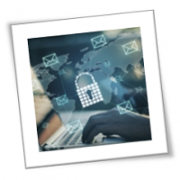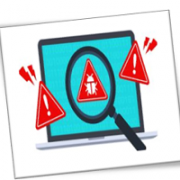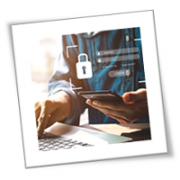Email is one of the most commonly used forms of communication nowadays. It’s quick, easy, and convenient, but it’s also vulnerable to attacks from hackers. Read on for some practical tips that you can use to secure your email account and keep your information safe.
Use strong passwords
Many email users fail to realize how important it is to have a strong password. A large number of people still use weak passwords, such as “123456,” “qwerty,” or even just “password.” What’s worse, they often reuse these same passwords for multiple accounts. To keep all password-protected accounts secure, utilize strong passphrases that are unique to each account.
Enabling multifactor authentication (MFA) for your email account is also a good security measure. With MFA, a user would have to verify their identity by providing their username and password as well as a valid fingerprint scan or an answer to a security question. This makes it more challenging for malicious actors to access your account.
Encrypt emails
Email encryption is a process that transforms readable text into unreadable code. This code can be read only by someone who has the corresponding decryption key, keeping your email safe from unauthorized access.
Don’t ignore security updates
Always install the most recent updates for your antivirus, firewalls, and email security software. Doing so can protect you from cyberattacks, as it enables these cybersecurity solutions to detect and filter out even the newest email-based cyberthreats. Installing these updates also fixes software vulnerabilities that can be exploited by hackers.
Do not click on suspicious links and email attachments
Refrain from downloading or opening files and links in emails if you’re not 100% certain they are safe. These links may direct you to fraudulent websites or these email attachments may install malware on your computer.
Beware of phishing scams
Phishing is an online scam in which criminals pose as legitimate businesses or individuals to obtain personal information, such as passwords or credit card numbers. Phishing scams can use different communication platforms, but they often involve fake emails that contain links to spoofed websites. When unsuspecting users input their personal information into these fake sites, criminals can use that information to commit identity theft or fraud.
Phishing scams are becoming increasingly common, so it’s important to be aware of how they work. Take note that reputable companies would never ask for such sensitive data via email. If you believe that the email you received might be from a phishing attempt, contact the company directly using the contact details on their official website. Don’t use the contact details in the dubious email as these might be fake too.
Regularly monitor account activity
Monitor for any suspicious behavior, which involves checking your logs for things like unusual devices or IP addresses that have accessed your account. Such activity could indicate a security breach. If you think your account was hacked, sign out of all web sessions and immediately change your password.
Use different email accounts
Don’t use one email account for everything. Otherwise, if someone gains access to that account, they could also easily steal any stored information or connected online accounts associated with that email. This could lead to hackers using your account for fraud and other illegal activities.
That’s why you should create separate email accounts, such as a personal account dedicated to communicating with your friends and family, and a professional account for work-related tasks only. You can also create another email account for miscellaneous things, such as online shops, gaming sites, newsletter subscriptions, and the like.
As we become increasingly reliant on technology, the importance of email security grows even more. To protect yourself and your loved ones, you must take steps to secure your email account.
If you are looking for an expert to help you find the best solutions for your business talk to GCInfotech about a free technology assessment
Published with consideration from TechAdvisory.org SOURCE











